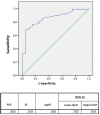Drug-drug interactions between treatment specific pharmacotherapy and concomitant medication in patients with COVID-19 in the first wave in Spain
- PMID: 34127740
- PMCID: PMC8203634
- DOI: 10.1038/s41598-021-91953-2
Drug-drug interactions between treatment specific pharmacotherapy and concomitant medication in patients with COVID-19 in the first wave in Spain
Abstract
Primary aim was to assess prevalence and severity of potential and real drug-drug interactions (DDIs) among therapies for COVID-19 and concomitant medications in hospitalized patients with confirmed SARS-CoV-2 infection. The secondary aim was to analyze factors associated with rDDIs. An observational single center cohort study conducted at a tertiary hospital in Spain from March 1st to April 30th. rDDIs refer to interaction with concomitant drugs prescribed during hospital stay whereas potential DDIs (pDDIs) refer to those with domiciliary medication. DDIs checked with The University of Liverpool resource. Concomitant medications were categorized according to the Anatomical Therapeutic Chemical classification system. Binomial logistic regression was carried out to identify factors associated with rDDIs. A total of 174 patients were analyzed. DDIs were detected in 152 patients (87.4%) with a total of 417 rDDIs between COVID19-related drugs and involved hospital concomitant medication (60 different drugs) while pDDIs were detected in 105 patients (72.9%) with a total of 553 pDDIs. From all 417 rDDIs, 43.2% (n = 180) were associated with lopinavir/ritonavir and 52.9% (n = 221) with hydroxychloroquine, both of them the most prescribed (106 and 165 patients, respectively). The main mechanism of interaction observed was QTc prolongation. Clinically relevant rDDIs were identified among 81.1% (n = 338) ('potential interactions') and 14.6% (n = 61) (contraindicated) of the patients. Charlson index (OR 1.34, 95% IC 1.02-1.76) and number of drugs prescribed during admission (OR 1.42, 95% IC 1.12-1.81) were independently associated with rDDIs. Prevalence of patients with real and pDDIs was high, especially those clinically relevant. Both comorbidities and polypharmacy were found as risk factors independently associated with DDIs development.
Conflict of interest statement
The authors declare no competing interests.
Figures
References
-
- COVID-19 Map. Johns Hopkins Coronavirus Resource Centerhttps://coronavirus.jhu.edu/map.html (accessed 26 April 2021).
MeSH terms
Substances
LinkOut - more resources
Full Text Sources
Medical
Miscellaneous



